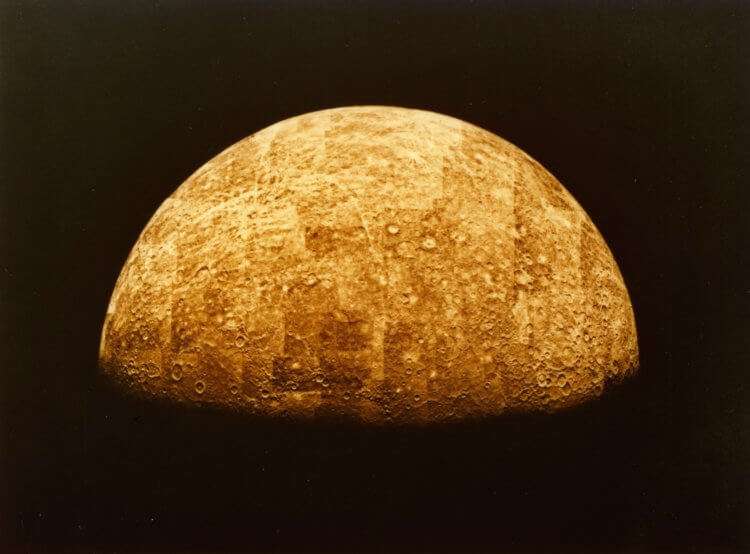The nearest planet to the Sun, Mercury, may be suitable for the emergence of life. Experts from the Institute of Planetary Sciences came to this unexpected conclusion, believing that this tiny world has everything necessary for the emergence of microorganisms. At the same time, although the planet is rich in virtually inexhaustible reserves of energy, the possibility of living on it has long been considered absurd. But what would happen if the hypothesis of American scientists were confirmed?

Could there be life on Mercury?
Although Mercury is a very unfriendly place for humans, the planet’s thin atmosphere contains the three most important components of the appearance of life – water, oxygen and methane, writes Futurism.com. In addition, the planet’s surface, which is completely covered by cracks, may indicate the presence on the planet of volatile substances – elements that can quickly change from one state to another, such as a liquid, which becomes a gas under the action of high temperature and pressure. So, if one day volatile substances are indeed found on the planet, the bold claim by scientists from the Institute of Planetary Science that life exists on Mercury may prove quite plausible.
Volatile substances such as water can create a favorable environment for life beneath the planet’s surface, even at high outside temperatures. Water can also protect local life from the sun’s rays, which bombard Mercury every second. However, despite the positive opinion of scientists, one of the main problems for life on the planet closest to the Sun can be extremely low atmospheric pressure, so Mercury is known not only for its steep temperature drop between -200 and +430 degrees, but also for its poor protection from the Sun. stream of charged particles, which destroys the surface layer of the world and is hostile to the Earth organisms. But who says that local life must necessarily be like ours?
Will there be the hope of finding Aliensz on Sun planet?
Although all of the current hypotheses about Mercury remain only unconfirmed theories, there is a chance that the simplest life could be lurking in the bowels of the scorched planet. Recognition of alien life on the nearest planet to the Sun is hindered by the Sun itself: making all observations difficult, our star makes Mercury one of the least studied planets in the solar system. Only a few missions in the past have allowed humanity to get a sense of Mercury’s landscape and sent images of the distant planet to Earth. The Mariner 10 and Messenger programs, which have managed to reach these rugged lands, have determined the main characteristics of the dwarf planet, providing humanity with data on Mercury’s temperature, atmosphere and water reserves. Nevertheless, the first attempts were made to study life on the planet, but twentieth-century research showed its complete absence due to unsuitable climatic conditions.
The BepiColombo mission, launched by the European Space Agency in 2018, may offer hope for detecting extraterrestrial life near the Sun. The spacecraft is due to arrive on Mercury in December 2025, seven years after the official launch of the automatic mission. Spacecraft is planned to orbit Mercury for about a year, during which it will study the planet’s interior and analyze the quality of water ice reserves in the Arctic. If the mission is successful, within a few years the question of Mercury’s life will find a long-awaited answer, and every achievement will become a sensation in the world of science.




